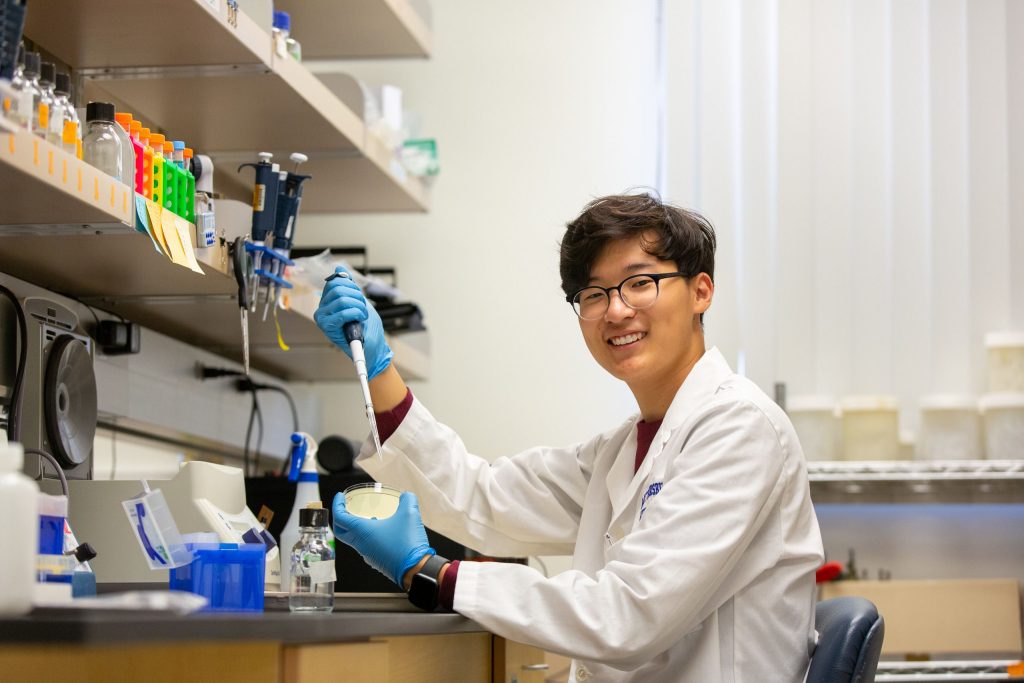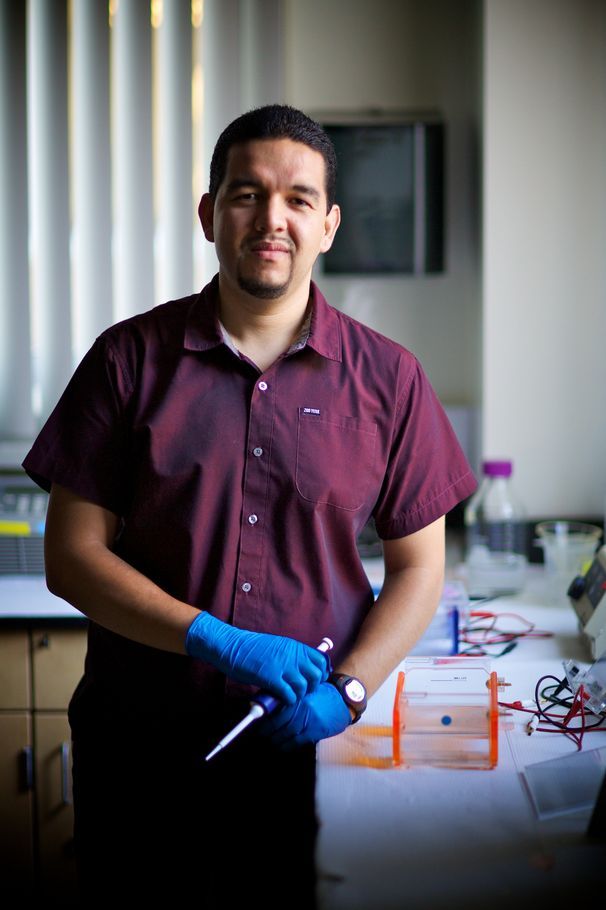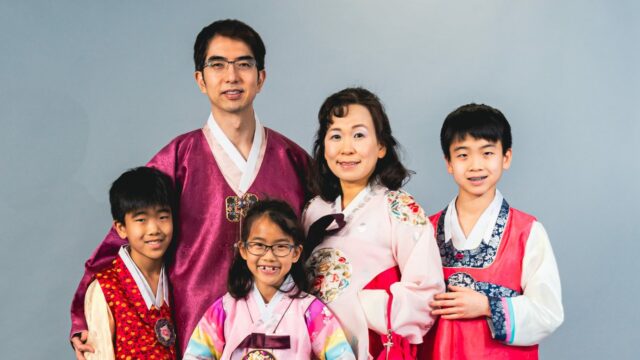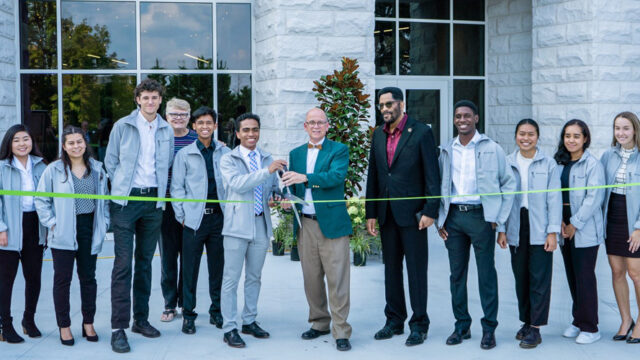Achievement caps three years of work for La Sierra University biology majors.

In a significant achievement for undergraduates and capping three years of work, two La Sierra University biology students published a scientific paper under the guidance of professor and virologist Arturo Diaz, in June 2022 in the International Journal of Molecular Sciences.
The article, titled “Characterization of Phages YuuY, KaiHaiDragon, and OneinaGillian Isolated from Microbacterium foliorum,” appeared June 14 in a special journal issue titled “Bacteriophages as Tools in Applied Sciences.” The article covers research by students Uylae Kim and Elizabeth Paul and details the characterization of three viruses that infect bacteria and that were discovered in Microbacterium foliorum, a bacterium found in organic matter.
The work was initiated during Diaz’s SEA-PHAGES course with Kim’s discovery of one of the viruses and continued in Diaz’s research lab. It has potential implications for the treatment of antibiotic-resistant bacterial infections in humans and food-borne pathogens.
“This project meant so much to me, and to be able to make an impact in the field of bacteriophage is a blessing,” Kim, a former pre-med major who wrote the initial draft of the manuscript, said. During his senior year he put together the figures that drew upon two prior years of research. He, Paul, and Diaz edited the manuscript until it was ready for submission in May.
An award-winning honors student, Kim graduated summa cum laude five days after the paper was published and will enter medical school at Loma Linda University this year. “I hope to conduct research even after I go to Loma Linda School of Medicine to pursue my MD. I am extremely grateful for Dr. Diaz, my lab members, and the biology department for enabling me to do this research,” he said.
For Paul, also a pre-med major, who joined Diaz’s lab in 2020 as a teenage volunteer assistant, the experience confirmed her long-standing interests in scientific research, which she plans to incorporate into a future medical career. “Especially because of the research that we’ve been doing, I realized that the lab is one of my happy places,” she said. “I think what I realized about research is [that] it’s almost therapeutic in a way, because it allows you to really be able to focus in on something that you know matters.”
Diaz, an associate biology professor, said the publication of his students’ work in such a prestigious journal was a high point not commonly experienced among the ranks of most undergraduate college students. “I was incredibly excited and proud of Uylae and Elizabeth for getting their work published in a high-impact journal, which is something that undergrads rarely get to do, let alone without the help of graduate students or postdoctoral fellows,” he said.
The article in the molecular sciences journal details their findings on the analysis of three bacteriophages, also known as phages. A bacteriophage is a virus that infects and kills bacteria. Phages attack only bacteria and are not harmful to humans. They are simply composed and are abundant throughout earth’s biosphere in places where bacteria are plentiful, such as in soil and water. Because of this and due to their important role in foundational biological concepts such as the definition of a gene and the discovery of messenger RNA, as well as their broad applicability to human life, the molecular sciences journal dedicated a special edition to their study, journal editors stated in a description of the special edition.
“As natural enemies of bacteria, phages are an effective alternative to antibiotic-based treatments of bacterial infections,” the journal editors wrote. “Nowadays, phages are used in food preservation and in decontamination processes,” as well as serving key roles in biological processes.
The three phages at the heart of Kim and Paul’s work, YuuY, KaiHaiDragon, and OneinaGillian, were discovered respectively by Kim and by two former students of Diaz’s SEA-PHAGES class. The students isolated, named, and sequenced the phages, which they found in soil samples taken from the local area.
The SEA-PHAGES course was launched in 2017 after La Sierra’s biology department, through Diaz’s initiative, was accepted into the Science Education Alliance administered by the Howard Hughes Medical Institute. It is designed to replace introductory biology classes for high-performing freshmen who have an interest in hands-on scientific research. Students who complete the two-quarter SEA-PHAGES course move to its sequel SEA-GENES, which guides students in investigating gene function.
The Mentoring Factor
The authors of a paper published in 2011 cited the importance of integrating teaching and research in undergraduate biology education. “Both the National Academies and the American Association for the Advancement of Science recently emphasized that undergraduate education could be improved by a higher level of student participation in authentic research,” they wrote.
Diaz estimates that between the SEA-PHAGES and SEA-GENES programs, more than 50 undergraduates have been co-authors in five publications.
He likens himself to a basketball coach in the lab. “I help train the students in the various techniques they’ll need to develop their projects. We meet weekly to go over the progress they’ve made and plan the experiments for the following week, and in general [I] provide advice and encouragement throughout the project. It is then up to the students to go out and execute the game plan,” he said.
And one research project usually leads to others. For instance, in addition to her work on phages with Kim, Paul has been analyzing the Maize chlorotic mottle virus, which is spread by beetles and infects, deforms, and kills corn plants. She is building on preliminary research conducted by other La Sierra biology students.
“I’m working on this virus because it’s been so devastating to a lot of crops in sub-Saharan Africa,” she said. “And so, by understanding the replication process, we can really open up our field of knowledge and expand on that so that we have more resources to really combat this virus and its replication area.”
The original version of this story was posted on the La Sierra University news site.











